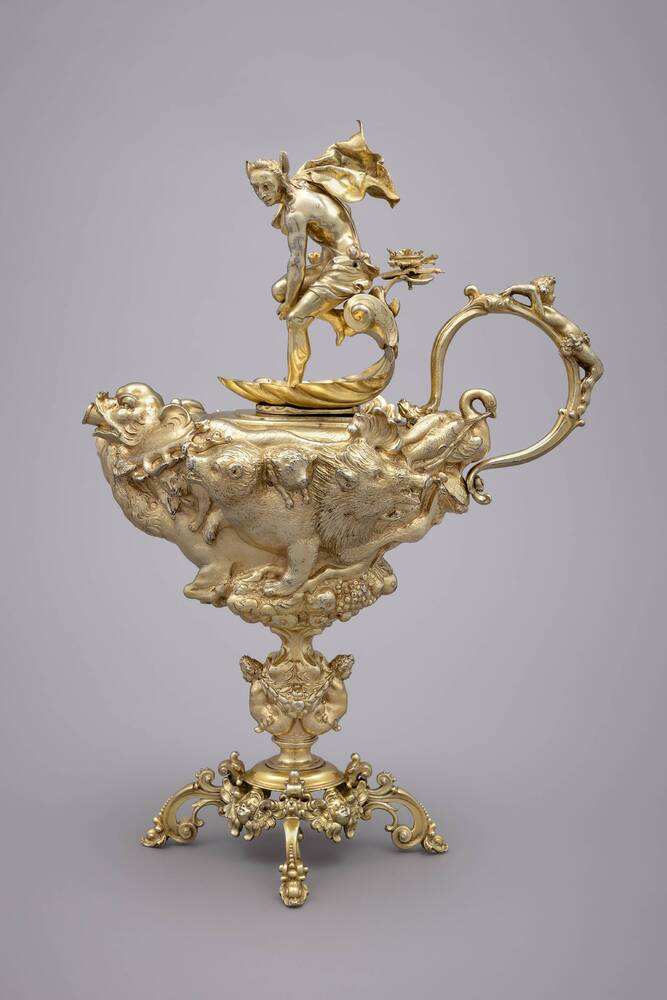Having your hands washed in rose water by a servant was an integral part of table manners at the royal courts of Europe in the seventeenth century. Most people still ate with their fingers. Spoons were used only for soup, and the fork was just gradually being introduced to the dinner table.
Splendid ewers and basins like these were, of course, also for show. In fact, some were so elaborate that they were completely unsuitable for use. They generally ended up in a Kunstkammer.
This lavabo was created by the Dresden goldsmith Daniel Kellerthaler, an outstanding artist and intellectual of his time. Elector Johann Georg the First paid the handsome sum of two thousand seven hundred guilders for it.
Let’s take a closer look at the ewer. It’s decorated with a profusion of animals: wild boar, bears, a badger, a bull, rams, deer and a swan. You see a statuette of King Midas on the lid. Instead of a crown, he has donkey’s ears on his head. The insignia of power are lying discarded on a leaf.
The decoration is inspired by an episode narrated by the Roman poet, Ovid. Midas was the judge of a musical competition between Apollo, who played the lyre, and Marsyas, who played the flute. When Midas awarded the prize to Marsyas, Apollo sought revenge by giving him the ears of a donkey. Kellerthaler has depicted the competition on the inside of the basin.
This magnificent object was created about 1629 – just as central Europe was beginning to drift into the Thirty Years War. Saxony was not yet particularly affected by the conflict. So Kellerthaler‘s work can be seen as a conscious testimony to a passing age.

